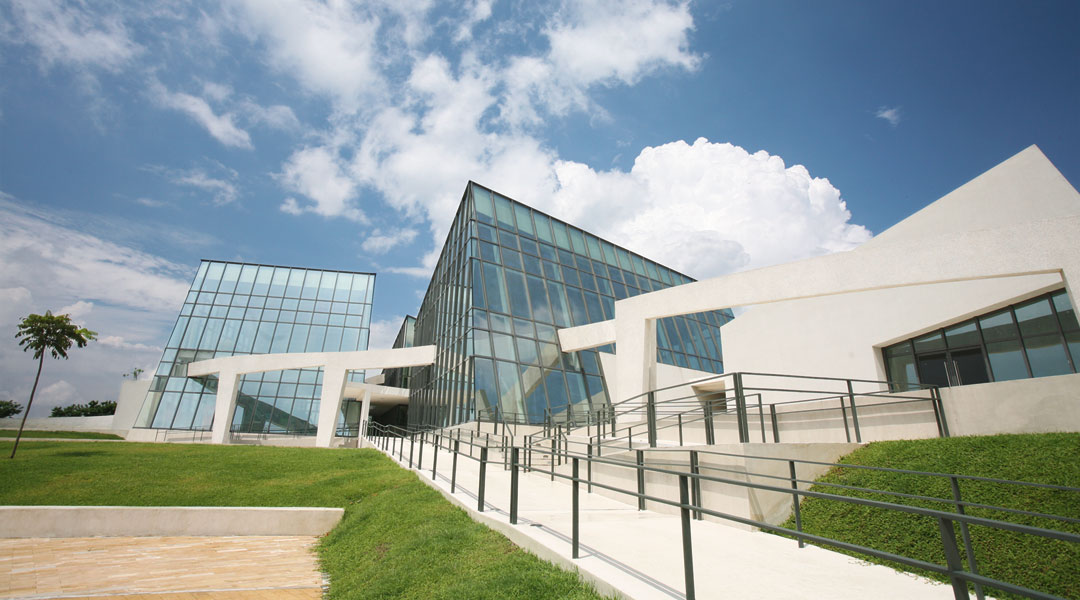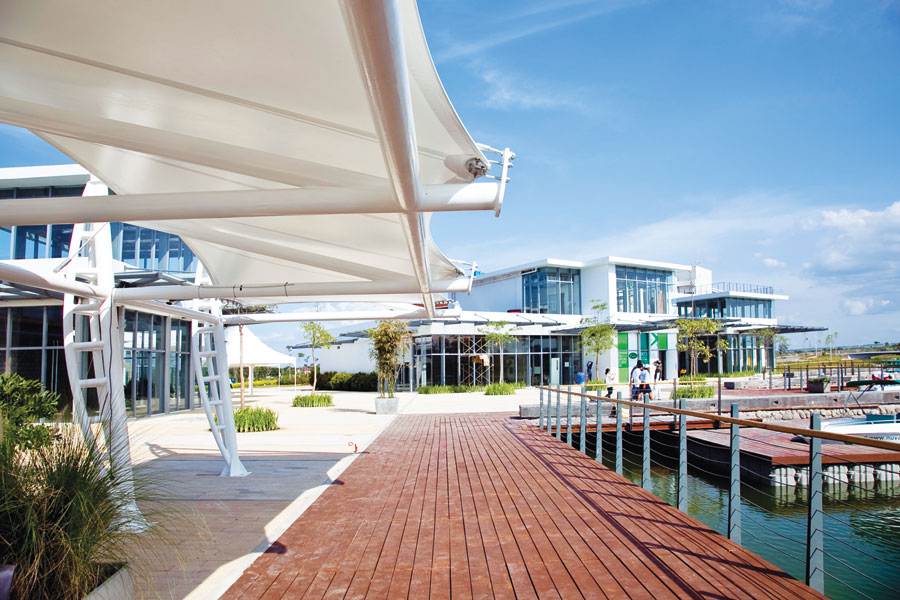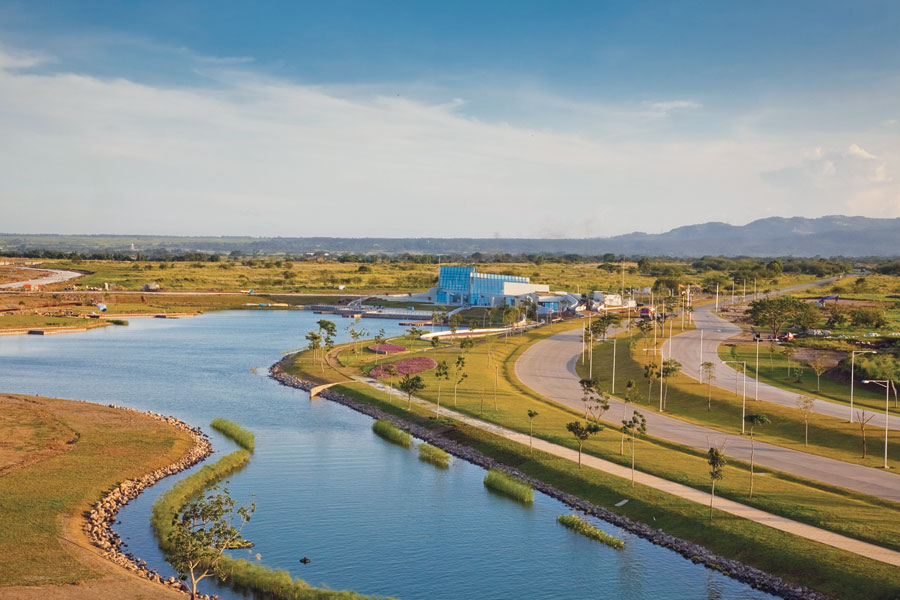
Localizing green buildings: Will BERDE take the LEED?
Living in the Philippines, we have no choice but to adapt to the unrelenting onslaught of typhoons and monsoon rains—Milenyo and Ondoy have proven that. Yet it seems that most of us are intent on building concrete boxes around ourselves to keep nature out—not working with it but against it.
Thankfully, we’ve caught on to the green building movement, with various green organizations in the building industry laying the foundations brick by brick. The Green Architecture Movement (GAM) of the United Architects of the Philippines, and Green Architecture Advocacy Philippines (GreenAP) are two of the non-profit organizations that have been pushing for sustainability locally. These, along with the recognition of our own green building council— PhilGBC or the Philippine Green Building Council—as part of a global network of green building councils, are positive signs of sustainable design and building initiatives in the country.
Green building rating tools, such as the Leadership in Energy and Environmental Design (LEED) rating system in the US, have been established by GBCs all over the world to advocate for sustainability in the built environment. The popularity of LEED has created quite a market for green building practices, with the prestige of being LEED-certified reaching even our side of the world. The Philippines had 19 LEED registered projects, as of 2011, with the Zuellig building in Makati gunning for Gold Level certification (the other levels are: Certification, Silver and Platinum).
READ MORE: LEED the game: A look into the green building rating system

The question is, why develop our own rating tools when we can adapt an established system like LEED? Or if tropical conditions are of concern, why not rating systems for the tropics like Singapore’s BCA Green Mark or Hong Kong’s BEAM? But not only do distinct environmental concerns enter the picture, economic and social concerns also prompt the need for a rating system designed especially for our context. Enter BERDE, or Building for Ecologically Responsive Design Excellence.
BERDE is a green rating tool established by a consensus of professionals from the building industry, spearheaded by the PhilGBC. There are currently two BERDE technical manuals—BERDE for New Construction and BERDE for Existing Buildings, which detail the standards that each building
project will be measured against. Christopher dela Cruz, chairman of PhilGBC says, “What the scheme measures is above and beyond existing building standards and codes.”
PhilGBC has brought in TÜV Rheinland, a third-party professional certification body, to ensure the credibility and impartiality of the BERDE professionals who will implement the system. TÜV Rheinland’s presence reduces the possibility of bias or conflict of interest that could be introduced if the PhilGBC, whose members are also in the building industry, applied the rating system themselves.
Training for BERDE professional assessors held by the PhilGBC and TÜV Rheinland began in 2011. They are open to anyone who holds a four or five-year degree related to construction, project, or environmental management and has five years of work experience in the industry. Then they would need to enroll in the five-day training course and pass the examination and undergo assessor training to become a BERDE professional.

“There is a lot of ‘greenwashing’ nowadays, but with BERDE it is very clear,” says TÜV Rheinland’s Chief Operating Officer, Tristan Loveres. “In order to qualify for BERDE certification, a structure must first meet the local and national government building and environmental requirements,” adds Loveres. Then, the two BERDE technical manuals list comprehensive standards— management, land use and ecology, water, energy, transportation, indoor environment quality, materials, emissions, waste management, heritage conservation and innovation—that building projects need to meet to attain BERDE certification.
Key features of the BERDE system are its on-site walkthrough evaluations, annual surveillance, and a five-year shelf life. Building projects would need to reapply for certification every five years—to avoid underperforming BERDE-certified buildings. BERDE is concerned with the evaluation of the entire building process, from design conception to construction, operation and upkeep.
The difficulty, as with most sustainability initiatives, presents itself in the either-or question of short-term practicality versus sustainability: Do we prioritize environmentally responsible building practices that do not seem workable in our debt-ridden economy and the state of poverty of the country? The process of vying for BERDE certification is in itself quite costly, with the manpower and expense of evaluations and reevaluations that property developers will shoulder (and pass on to their buyers). This, along with high start-up costs and the need for creative solutions, investing in green building technology— solar panels, green roofing and graywater systems—may seem daunting at first. That, however, would be offset by lower energy expenditure and water efficiency—cost savings in the long run. And, it remains a concrete way that we can begin to take significant steps towards sustainability—steps that climate change experts say the world cannot take soon enough.
The BERDE pilot project for New Construction is the Net Metropolis, 5th Avenue in Bonifacio Global City by the Net Group, of which Net Lima is the first building. The Net Group brought in Chad Oppenheim of Oppenheim Architecture + Design, a firm known for their green design philosophy. The Net Metropolis is a three-tower compound, and Net Lima, the first constructed building, will utilize green “firsts” in the Philippines. Oppenheim introduces a high performance glass curtain wall to counter heat gain and make use of natural light; cold air recycling; harvesting of water from the air conditioning units (for landscaping and cleaning); along with other innovative green features.
READ MORE: The Net Metropolis in BGC champions BERDE

Ayala Land has enrolled eight of their properties—Nuvali EvoLiving in Laguna, Greenbelt, UP Ayala Techno Hub, Ayala Tower One in Makati, among others—as pilot projects for BERDE for Existing Buildings. The De La Salle University’s Henry Sy, Sr. Centennial Hall will also be the pilot project for BERDE for Universities, and PhilGBC is eyeing future prospects— BERDE for communities, hospitals and commercial establishments.
The BERDE rating system is voluntary, and the PhilGBC wants it to remain so. Associate Director for Residential Properties Erickberth N. Calupe is working closely with TÜV Rheinland and PhilGBC. “The fear is whether it will fly or not. Right now, we’re tapping various industry players, and with the involvement of Ayala and Net Group,” he says, it seems BERDE will continue to garner positive response. As for government participation, they are still hoping for tax incentives for green buildings, and invite local governments adopting the rating tool, to follow the lead of the Quezon City local government’s green building ordinance.
The BERDE Technical Working Group is very clear in pinpointing priority areas. LEED grants certifications based on pre-determined standards—site sustainability, water efficiency, interplay between energy and the atmosphere, utilization of materials and resources, indoor environmental quality, innovation in design and regional priority. This is where the importance of context comes in. In the Philippines, priority is placed on land use, access to water and to mass transportation.
Says Loveres: “If it’s a green building but is inaccessible, or if you’re tearing down a 400-year old church just to come up with a green building—what about heritage conservation?” Distinct environmental and socio-economic conditions play significant roles in a rating system, as evident in BERDE’s weighing tool. The Philippines is characterized by extremes—hot and wet weather conditions; the widening gap between few car-owners and countless commuters, and expansive, exclusive subdivisions versus cramped communities of informal settlers. These are just a number of considerations in developing a rating system for us that define priority areas relevant to our specific context.
READ MORE: What St. Mark’s Basilica taught me about sustainability

Will efficient land use, stormwater management, and access to mass transit prove to be weightier than LEED priorities of indoor air quality in our country? We wonder how BERDE certified buildings will perform compared to LEED certified buildings. Is there a chance of a LEED certified building failing to acquire BERDE certification because of our differing priorities? We can only wait and see. In the meantime, both PhilGBC and TÜV Rheinland seem keen on the fact that the system is open for consultation and criticism, and rightly so. And as BERDE is still in its early stages, we hope that building projects follow through on what earned them their BERDE certifications.
Ultimately, having a green building rating system leaves less room for mediocrity. In pushing for green design and building practices, the mission is to fulfill most, if not all categories not just for the prestige that comes with a higher star rating, but for a greener, more sustainable future. Faced with the urgent need for sustainability initiatives to respond to the reality of global climate change, the BERDE rating tool, a tool that tries to address specific Philippine conditions, could be the start of mainstreaming of greener practices in the built environment in our country. ![]()
This article first appeared in BluPrint Special Issue 2 2011. Edits were made for Bluprint online.
Photographed by Paulo Alcazaren


